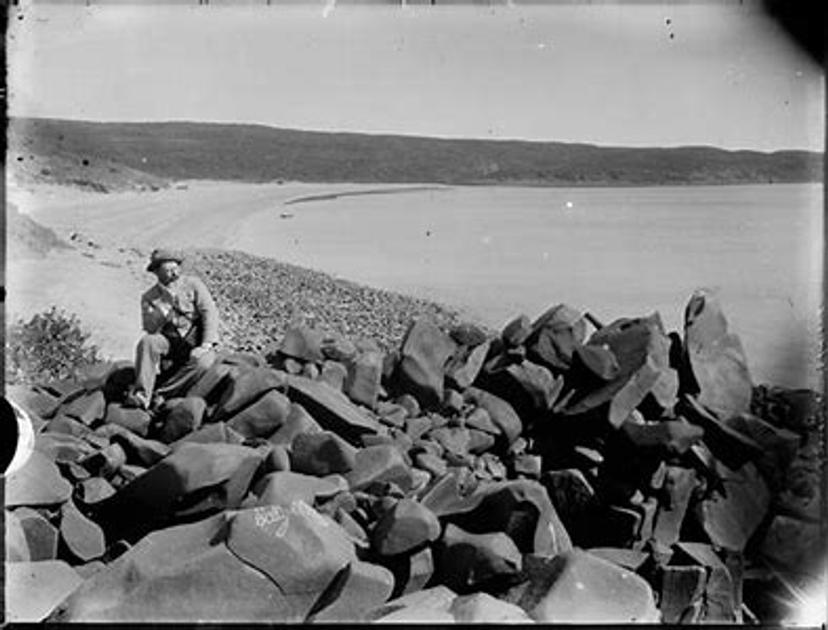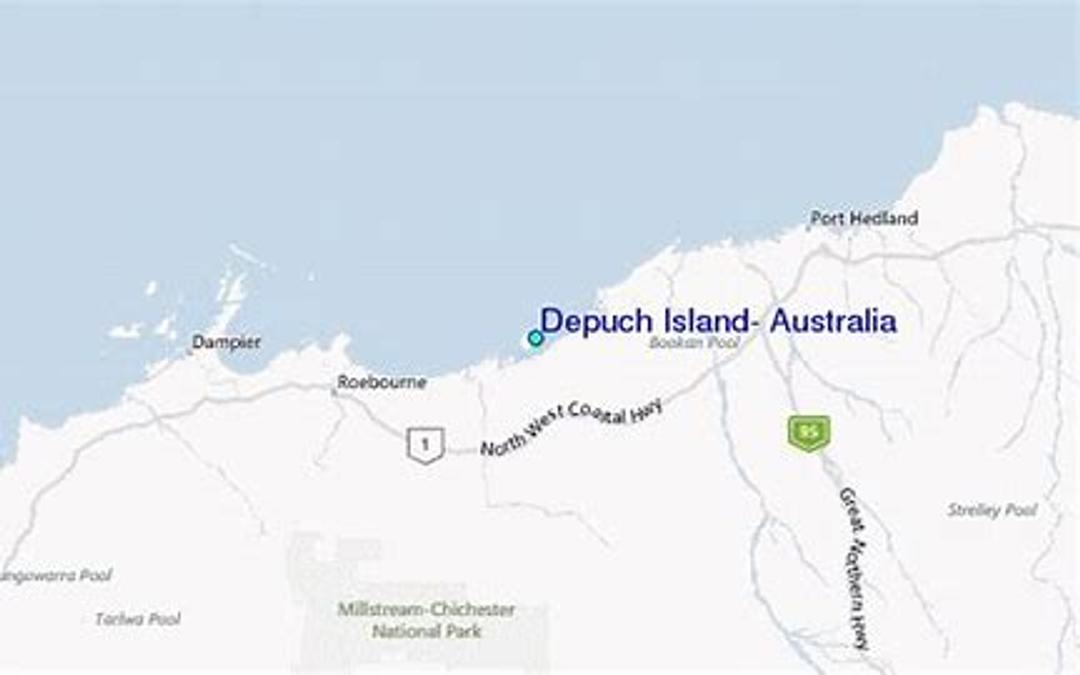Clara
Vessel Name: Clara
Robert Thompson, surveyor
The unnamed mate
Three unnamed crew members
Drowned in a cyclone; bodies not recovered
10 March 1912


Depuch Island 1900s

Depuch Island 3kms off Karratha
Clara was a lugger working off Depuch Island, 3kms from the mainland through shallow water and mangroves. Her owner, James Scanlon, did not register her in Western Australia when he bought her from her previous pearler owners, so her specifications are unclear. She operated with two Japanese divers, a mate and four multicultured crew members.
Clara continued her pearling career, based around Port Hedland, Karratha, Wickham and Roebourne. Depuch Island is a volcanic island, 5 km long and 3 km wide. It was used as a guano base for some time, before pearl shell was discovered in the area. Pearl shell banks were in shallow water and were easily gathered. There was a sheltered anchorage in the area, making it appealing to passing boats seeking shelter from willy willies and cyclones.
On 20 March 2012 the barometer dropped sharply, sending the pearl fleet running for shelter. A cyclone was imminent, due to cross the coast between Broome and Karratha, with the centre tracking for the 90 Mile Beach.
Clara and luggers Britannia and Karrarra anchored at Depuch Island. They were small 12-ton boats gathering pearl shell in the shallows. There were seven crew members aboard each boat.
Two bulk carriers, Crown of England and Concordia anchored with the pearling vessels, braced for the cyclone. It had been only four months since the most devastating of all cyclones to date. There had been £30,000 of damage, and the loss of 23 lives from one small fleet.
The cyclone began and carried on through the next day. The squalls whipped up the sea and caused the luggers to capsize. Clara capsized and sank to the shallow bottom.
Clara was listed as missing until 28 March when she was finally found by the police cutter. It had been sent from Cossack to help with the search and rescue mission after the cyclone had passed. The police cutter reported Clara was a total wreck, and her crew were missing.
A telegram was sent from Broome to the manager of the Adelaide Co. advising Clara had sunk with some or all her hands. The search for crew members was underway but none of Clara’s crew had been found. Britannia was lost without a trace.
The ore carrier Crown of England and international carrier Concordia were destroyed. Crown of England lost 23 crew, and 11 of the bodies were never found. Captain Olsen from Crown of England and Captain Erikson of Concordia were tasked with identifying as many bodies as possible and burying them on Depuch Island. There were 6 bodies buried with headstones, and 16 European bodies that were buried without being identified.
Likewise, there were seven identified bodies on the opposite bank on the mainland at Balla Balla. It is unclear how many First Nations, Japanese and Malays were buried on the beaches. They were not accounted for. Captain Erikson ordered large tarpaulin sheets be laid out over unidentified bodies. He sprinkled each with earth and the mass graves were filled in.
Clara had sunk in the shallows and then driven up onto the beach on Depuch Island by the strong rising tide. Her two Japanese divers, Nakiachi and Sider were able to swim to the Island before Clara sank. The men remained on the island recovering for 3 days. Then on 3 April they swam to Balla Balla on the mainland, approximately three kms from Depuch Island. From there they were picked up by the lugger Marie who saw their signal light.
The steam lighter Beagle was transporting survivors to Balla Balla, the iron ore settlement, and there was shelter, food and rest to be found there for anyone needing it.
Crew member Bin Ahmat escaped the Clara as she sank and swam to save himself. The tide washed him this way and that for the next six hours, and he was disoriented when he landed on shore. When he finally found dry land, he began walking. He walked for days, eventually reaching Roebourne. He had not eaten for five days, and he was exhausted, hungry and dehydrated.
When the Clara was checked by search parties, it was discovered a surveyor named Robert Thompson from the lighter Clyo had become tangled in Clara’s rigging and drowned. He was buried on Depuch Island with the other deceased Europeans.
The remaining crew members, the European master and four First Nations men, were lost. Their bodies were never found and were not identified among the many unnamed lost along the northwest coast.
Over the next two weeks, there were many more bodies washed up or found floating in the water. Many were not able to be identified and were buried anonymously in the sand hills of Depuch Island and Balla. It is unknown where the missing crew of Clara were buried. They were the mate and four crew members; a few of the 32 European and 40 multicultured sea men lost in the cyclone.
